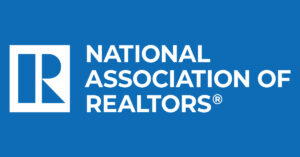The age of the vanilla client took hold for the mortgage industry post-crash in 2008. Mortgage companies suddenly catered only to the top-of-the-line clients, the 720-FICO-score, full-doc, W-2 borrowers with plenty of assets.
Today, even with rising rates, increasing home values and low inventory, many lenders are still so worried about their Federal Housing Administration (FHA) scorecards that they don’t want to bother with FICO scores less than 600 — and certainly not less than 580. Added to that are the skittish mortgage companies with large call centers and online lenders that don’t have the time to spend on a less-than-perfect client.
That leaves a large gap of borrowers who could be buying today, but who are still renting. These people could benefit from a FHA or Veterans Affairs (VA) loan, but they don’t know they have that as an option.
For these people, the American Dream of homeownership is within reach. The conundrum is how to identify these fringe clients.
Expand your reach
Once upon a time, a mortgage originator would walk into a real estate office and ask to work with the clients who were turned down. Then, with an abundance of buyers in the market, there was no need to work with the less-than-desirable client.
Today, some in the mortgage industry believe there is a lack of clients. In reality, the clients are there, but the originator has forgotten how to find them.
Most mortgage coaches will preach one of a few different philosophies: work your database; ask for referrals from partners and clients; follow up in a systematic manner. There is a place for all these strategies, but they will generate a finite number of leads.
By going after fringe clients, while implementing these coaching strategies, you move out of fishing in a small pond with all of the other originators. You are now fishing in the ocean.
Fringe clients are being turned down by credit unions or passed over by big banks shying away from government lending. They’re being overlooked at real estate offices that have in-house lenders who aren’t starving and can cherry-pick borrowers. There’s a mother load of these clients in the dusty files of internet lenders.
In 2008, as consumer confidence shifted from brokers to big banks, the mortgage originator would hear on a daily basis that they needed to source real estate agents instead of living off refinances. They would hear that for the next 10 years. The refinances would seemingly never end as the Home Affordable Refinance Program (HARP) loan kept getting extended, rates continued to drop and high-cost loans were all but history.
Then 2012 came and as the big banks were taking up to 180 days to close a refinance and up to 90 days to fund a purchase mortgage, borrower and real estate agent confidence shifted once again — this time to direct lenders.
There would be a strong refinance market until late 2016, shortly after the presidential election. And now, as many mortgage originators consider leaving the industry, or taking inside sales jobs and wholesale jobs, the true retail self-sourced originators must reinvent themselves.
For the foreseeable future, the successful originator will look more like the title reps of 2004, stopping into real estate offices and talking about clients that have been turned down, creating relationships with credit union and bank originators, and developing programs that are designed to keep the client in their database while working on their credit, income and assets. In essence, the mortgage originator will become what they always should have become, a mortgage planner and financial consultant that is proficient in all programs available in the market.
Dejected not rejected
The question to ask oneself is, “Why are these clients hidden?” The answer lies in the industry’s desire to market to clients with less-than-desirable profiles. A recent private poll showed that 80 percent of nonindustry-related borrowers, before speaking to a professional, were under the impression that they needed a FICO score above 700 and a 20 percent downpayment to qualify for a mortgage.
This myth exists because, until now, the industry did not need to focus on these borrowers. So, their first step in taking action was to hide behind a keyboard and search online for lenders that may approve them.
After applying, many were either turned down, or their calls were not returned. This left the borrower thinking that they could not buy, when in fact, they were just being passed over for a less-difficult borrower.
As an originator, you must consider the value in advertising to these clients. And you must employ a call to action that gives them peace of mind knowing that you will look at their entire financial picture, and that you will not say no, but rather, not right now.
You’ll find that there are buyers out there who can own their own home right now, and there are buyers out there that can be ready to purchase a home in 90 days. In the U.S., 23.2 percent of consumers have a FICO score between 600-699, and another 6 percent have a score between 580-599. That means nearly one in three Americans is potentially under the impression that they cannot be homeowners.
These underserved borrowers rely on licensed mortgage originators to lead the way. It’s time to step up and serve the public. It’s time to make a name for yourself in the mortgage industry. With decreasing mortgage insurance costs, no FICO requirement on VA and FHA loans, and conventional programs going as high at 97 percent loan to value, the market is wide open to clients of all flavors.
• • •
The fringe borrower will become increasingly important this year. The originator who aligns with a company that has a wide credit box, educates themselves and their partners and advertises to this demographic will rise to the top. In 2019, it will be cool to be anything but vanilla.
Author
-

Michael Sunnaa is CEO of Viewpoint Lending and managing partner at Lending 3. Sunnaa is a 25-year-plus veteran of the mortgage industry with a master’s in business administration who is currently working on his doctoral degree. His experience ranges from broker to banker to direct lender. Sunnaa has trained and managed more than 2,500 loan originators and continues to grow in changing markets.



